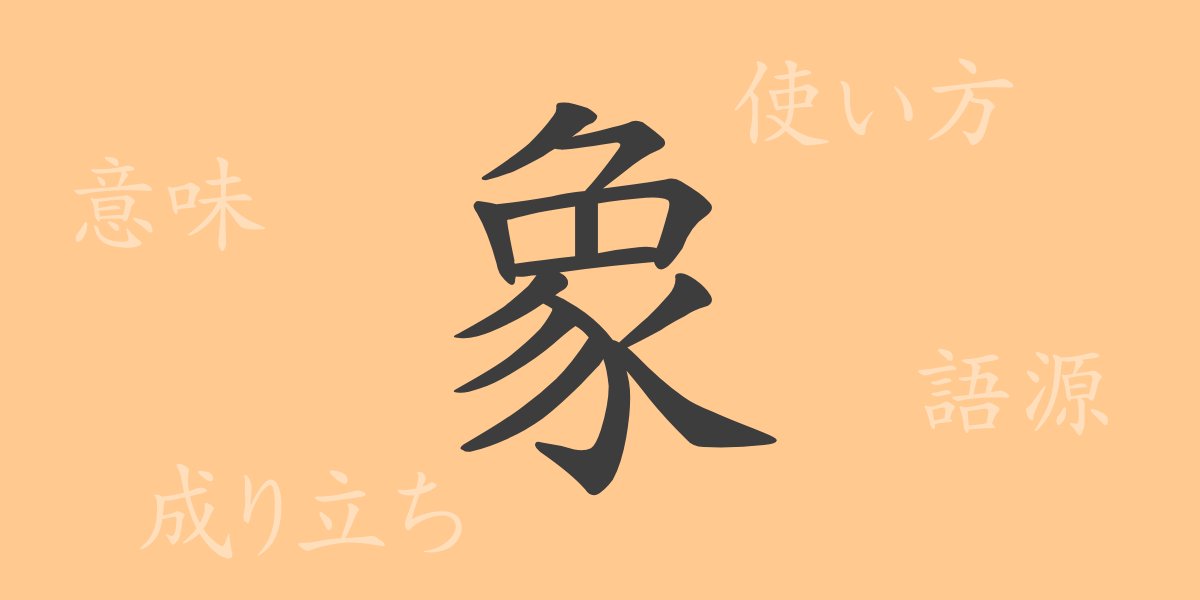The depth and history encapsulated in each Kanji character enrich the Japanese language. “象(しょう)” is no exception. This article delves into the origins, meanings, and uses of “象,” and explores phrases, idioms, and proverbs using this character. Join us as we rediscover the beauty of Japanese through the lens of “象.”
Origins of 象(しょう)
The kanji “象” originated from pictographic characters that depicted an elephant. It traces back to ancient Egyptian hieroglyphs, gradually evolving into the current kanji. This transformation highlights the cultural and historical narratives behind words, illustrating the stories they carry.
Meaning and Usage of 象(しょう)
“象” has multiple meanings. It commonly refers to the animal elephant, but it also means to mimic or emulate in shape or form as “像.” Furthermore, it’s used to denote the essence or concept of things, apparent in terms like “象徴” (symbol).
Pronunciation, Stroke Count, and Radical of 象(しょう)
Let’s look at how “象” is pronounced and written:
- Pronunciation: The on’yomi (音読み) is “ショウ,” and the kun’yomi (訓読み) is “かたどる.”
- Stroke Count: “象” consists of 16 strokes.
- Radical: The character itself serves as its own radical.
Phrases, Idioms, and Proverbs Using 象(しょう) and Their Meanings
Here are some expressions involving “象”:
- 一石二鳥(いっせきにちょう): Achieving two benefits with one action.
- 画竜点睛(がりょうてんせい): Adding the finishing touch that brings a work to perfection.
- 象徴(しょうちょう): A symbol or sign that represents something.
These expressions showcase the breadth of meanings “象” embodies, reflecting its significant role in Japanese language and culture.
Summary on 象(しょう)
The kanji “象” extends beyond simply denoting an animal; it encompasses various meanings and uses. From its pronunciation and structure to idioms and proverbs, “象” plays a vital role in the Japanese language. Understanding the rich history and cultural background behind “象” enhances our comprehension of the language, enriching our everyday communication.

























